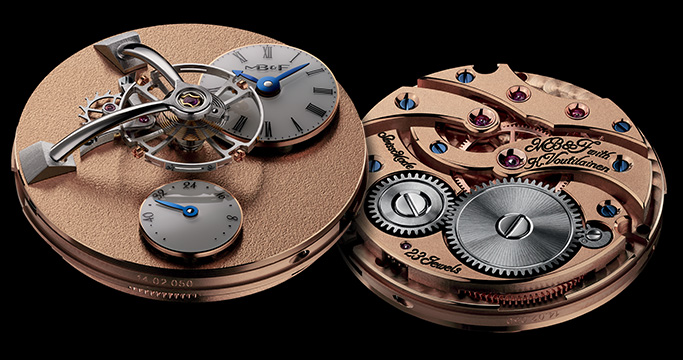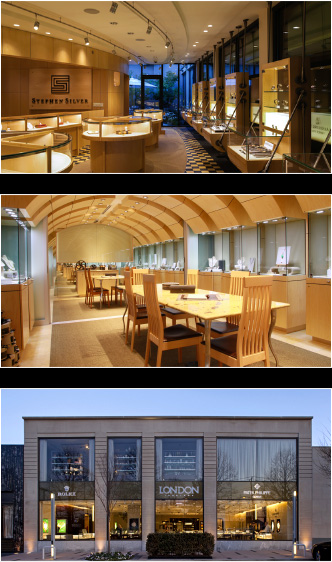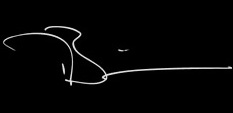|
MB&F / August 2015 newsletter
If you have trouble reading this email, click here to check the online version. |

|
|
Dear Friends, I hope you are enjoying your summer – may this newsletter find you in pleasant and relaxed surroundings, wherever you are! On our side, I must say the first half of our 10th Anniversary year has been just insanely busy… During this (slightly) quieter month of August, I finally found a moment to put together this new edition of our newsletter – and in an attempt to catch up with our intense launch calendar, I’ve included news about two of our recent timepieces. For good balance, an unconventional Horological Machine and our most classic Legacy Machine… |

|

|
|
“Final Edition”: granted, those two words sound a bit solemn… But for good reason: they mark the last chapter of our longest-standing, most diverse and prolific family to-date, Horological Machine No.3. Launched in 2009, that family has seen no less than 19 different variations, ranging from the original HM3s and the second-generation MEGAWINDs, to the owl-shaped JWLRYMACHINE created with Boucheron, through the various FROG variants, all the way to Stepan Sarpaneva and his MoonMachine iterations. Definitely a record at MB&F! – check out this short video to see most of them. |
||

|
||
|
For this MegaWind Final Edition, we decided to play with what might be the ultimate in contrast: light and darkness. The 18K gold case has been covered by black PVD, giving this HM3 a very dark side… but offer it some light, and the timepiece comes to life: the hour and minute markers on the distinctive revolving cones light up thanks to the brightest, purest, most powerful Super-LumiNova on the market: GL C3 Grade A. By the way, applying the Super-LumiNova is no easy task. It takes the skilled hands of an exceptional artisan to manually coat all those numbers and indices, one by one… Apply too much lume and the numbers will look sloppy; apply too little and they won’t shine bright. And as you can imagine, it would be much easier to work on the flat surface of a conventional 2-dimensional dial – not the paper-thin, slanted sides of MegaWind’s hour and minute cones! |
||

|
||
|
For a bit of added kinetic fun, the oversized rotor of the MegaWind Final Edition creates a stroboscopic effect when it spins, hiding and revealing a band of the same high-power Super-LumiNova positioned just underneath. I’ve often said MB&F is as much my biography as my psychotherapy… Could this be something resurfacing from my disco years? MegaWind Final Edition is a limited series of 25 pieces. The last HM3s ever! You’ll find all the details on our website. |
||

|

|
|
You may remember: when we introduced the first Legacy Machine 101 last year, we said it was the purest, most essential expression of mechanical watchmaking we could conceive. The LM101 “captured the essence” in a classic 40mm case, by focusing on just three essential elements: the balance wheel, a power reserve indicator, and – yes – the time. |
||

|
||
|
This year we decided to go a step further on our classic watchmaking trip, with the LM101 ‘Frost’ limited editions. ‘Frost’ because their dials have been frosted – a very traditional finishing technique which goes back to the 18th century, called “grenage” or “grainage” in French. At the time, there was a functional reason for frosting: pocket watch cases were absolutely not water-resistant, meaning humidity could easily reach the movements inside. To protect those precious movements against oxidation, plates and bridges were treated with a mix of acid and fire, making them more resistant – and giving them a silvery, “frosted” look. |
||

|
||
|
Nowadays cases are water-resistant – all our Machines are certified 3ATM – so frosting is no longer necessary and has become a rare skill. The handful of artisans who continue to master it have traded acid and fire for a safer, but much more delicate metallic brush process. Rather than brushing, which would remove material, the secret is to actually compress the metal, making the surface harder… and obtaining the beautiful, visually unmistakable frosted effect. |
||

|
||
|
How did we manage to enrol one of those rare artisans? Thanks to our Friend Kari Voutilainen of course, who has defined and supervised the aesthetics and finishing of our Legacy Machines from the very beginning. Thanks to Kari, we were able to collaborate with Jose Labarga, who frosts what seems to be the LM101 dial – but which is in fact the mainplate of the LM101 movement inside. For the record, a calibre which we are proud of since it is the first entirely conceived in-house by our own engineers. LM101 ‘Frost’ is a limited edition of 33 pieces in red gold and 18 pieces in yellow gold. |
||

|

|

|
Until recently, you could find our Machines in the boutiques of exactly 41 different retailers across all continents. Many of those retailers are fantastic partners and true Friends; but considering that we’ve voluntarily limited our production to less than 300 timepieces per year, we felt it was time to focus on collaborating with the very best. We therefore put an end to 9 relations but also added two new Friends to reinforce our presence in the United States. The result is 34 retail partners today. In June we opened Stephen Silver in Redwood City, in California’s Silicon Valley. Established in 1980, the company began as an appraisal business but over the last 35 years, it developed significantly, first in the jewellery business and then in watchmaking. Stephen is often considered the “resident horologist” in Silicon Valley’s venture capital community; he now curates a collection of timepieces including niche players like Greubel Forsey, HYT, Laurent Ferrier… and MB&F. In July we opened another retailer: London Jewelers, who are not in England but in New York’s Long Island. The name goes back to founder Charles London, who arrived from Europe in 1923 and started a business repairing and winding clocks on some of the great estates of Long Island's Gold Coast. He was joined later by the Udell family. Four generations later, London Jewelers continue to focus on Long Island, with 5 boutiques across the area including Manhasset’s famous “Miracle Mile” and the Hamptons. |

|

|
|
Robots that move, swim, push and carry objects might not sound like something new; for many, that's just what robots do. But a robot the size of a thumbnail doing all of that is a little more special. And if the robot can somehow build itself, well, that would be even better. To cap it all off, how about if after completing its mission, the robot dissolved and disappeared?
|

|

|
|
A miniature origami robot invented by engineers at MIT does all of that and then some. They hope that one day this tiny worker will fit inside the human body and perform less invasive medical tasks, after which it could self-dissolve, leaving behind no trace. Will we soon have little robots swimming around in our bloodstreams cleaning arteries? Find out more about these Origami Robots on our blog, A Parallel World. |

|
|
I look forward to seeing and hearing from you during the second half of 2015. Our social media accounts continue to grow (Instagram, Facebook, YouTube, Twitter, Google +) and we’ve also added a M.A.D.Gallery Pinterest page, if that happens to be your preferred channel. Please do join the conversation :) |

|
|
|

|
|
*|LIST:DESCRIPTION|* *|LIST:ADDRESS|*
Send to a friend |